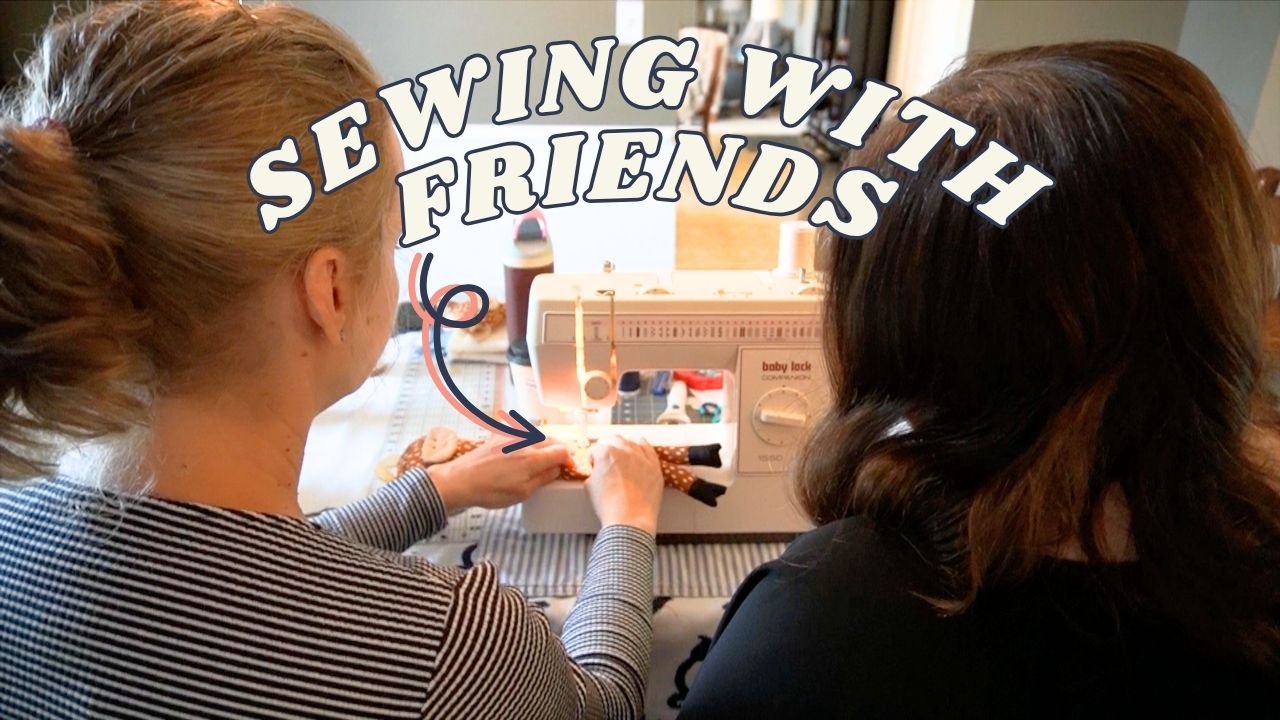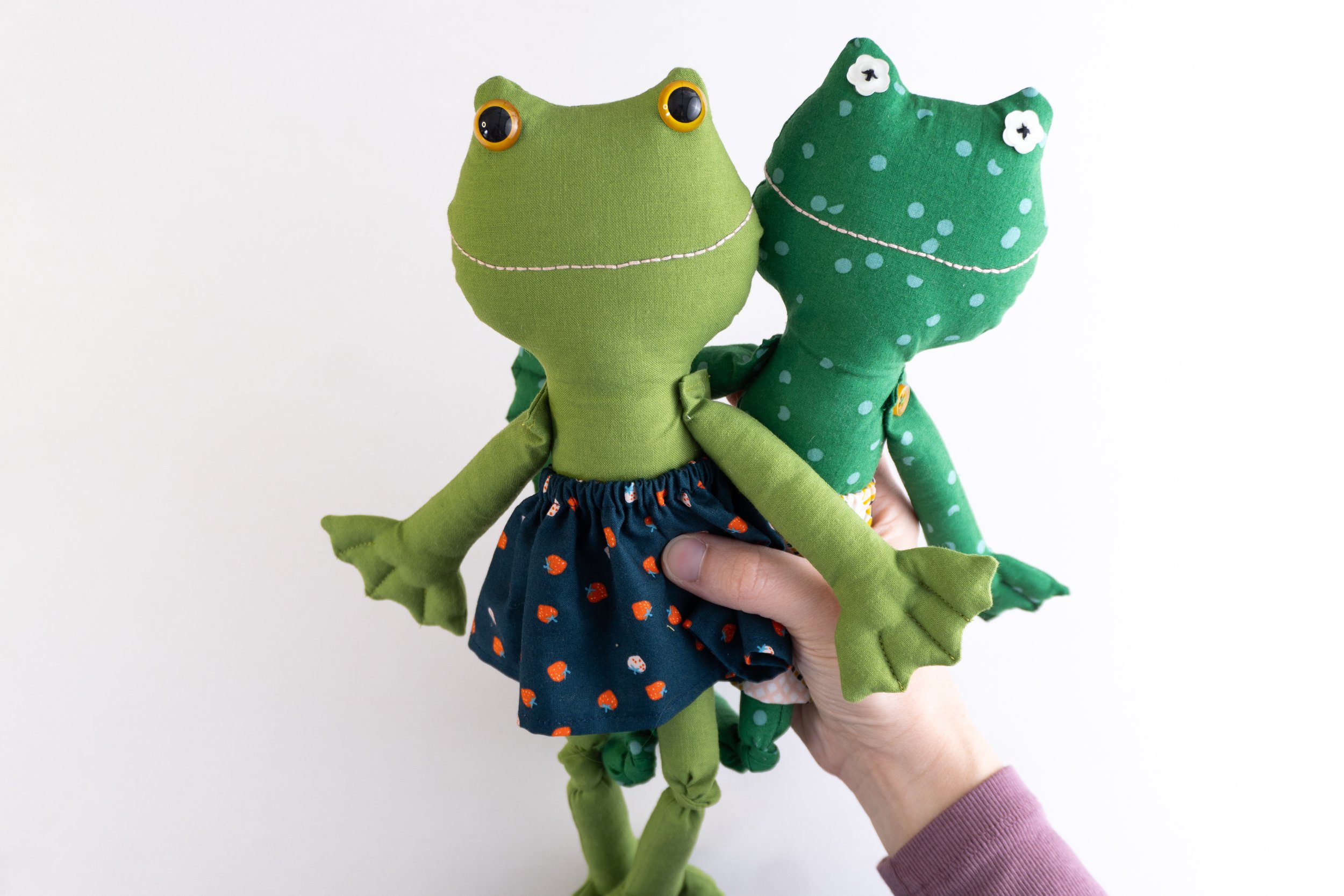Is Sewing Expensive? My Tips for Sewing on a Budget
Sewing doesn’t have to be an expensive hobby. Although you can definitely save money on certain types of sewing like home decor, you might find you can’t make your clothes for as cheap as you thought you could. Today I’m going to share some tips for making sewing cost less, so you can feed your sewing hobby, even if you’re on a tight budget!
Even just a couple decades ago, sewing was still considered a less expensive way of meeting one’s wardrobe and household needs. I don’t know if you’ve noticed, but this is just no longer the case. There are all kinds of reasons people sew, but I don’t think “because it saves me money” is often on anyone’s list anymore.
I don’t sew just because it’s cheap, but I would argue that it does save me money in certain instances, and I have some tried-and-true practices that allow me to keep at my favorite hobby in a frugal way. I hope this can help some of you, and if you have more tips that I haven’t mentioned here, please comment and let us in on your ideas for frugal sewing!
Saving Money on Fabric
After the initial expense of your sewing machine and basic tools, fabric is for sure the thing that can draw you in and cause you to spend a lot of money. These are some tricks I’ve learned to add to my fabric collection even in seasons when I’ve been on a pretty strict budget.
Use your thrift stores.
When my family needs something, I always try to thrift it first, before moving on to retail stores (you’d be shocked to see the like-new name brand shoes I find there on a regular basis!) Fabric is no exception and it’s super fun to think outside the box when sourcing fabrics at thrift stores. Here are my tips on what to look for:
Shop the entire home linens section. Not only is this where they keep fabric yardage people have donated, there are other gems also. I’ve made pajamas out of vintage cotton sheets. I also buy large sheets to use as muslins, and since I don’t care what they look like, I find the colored tag that’s half off that week. I’ve found vintage tablecloths to turn into aprons and sweatshirt fleece blankets to make hoodies out of. Last month I found a giant piece of nice activewear fabric to make my daughter some dance leotards.
Look for notions. I never pass up a bag of zippers at the thrift store! Often they will package notions together in bags and hang them on an end cap. You can find zippers, buttons, hardware, rick-rack and bias tape in these bags!
Look for the potential of ready-to-wear clothes. I was making a dress and didn’t have enough of my rayon fabric to line it. I wanted the lining to be rayon, so I went to my thrift store and found a white rayon skirt with plenty of yardage to line my bodice AND to make a slip for myself out of the skirt’s own lining and elastic waistband.
Some things I’ve made from thrifted fabric or sheets include the aforementioned pajama pants, a white denim skirt, a $4 rayon dress, my most worn Ogden came (pictured below), dance skirts, a linen jacket, and much more. I’ve also purchased cotton sheets to back quilts with and I never pass up linen anything. There is definitely more I’ve made with thrifted fabrics, it’s just too much to list! Thrift stores are my go-to for inexpensive fabric sources.
Don’t forget the clothing section!
You can also search your thrift store for clothing that would either make nice fabric or that you can refashion or tailor to fit you. I often search the skirts for linens or any fabric I think I can get a top out of, since skirts tend to offer some nice sized pieces to use. Like I said above, linen is a fabric I rarely pass up. Even if the item ends up not fitting me, I can use it for the fabric, in quilts, garments, or craft projects. It also dyes well, so linen is always a winning find in my book.
This leads me to my next point …
Think before you donate.
Can any of the clothes in your giveaway pile be remade?
Sometimes I raid my giveaway bag to make sure I can’t remake something into something new. For a full list of ideas on refashioning clothes, see my post here. And if you can’t remake them as clothes, consider using them to sew doll clothes or zipper pouches or other craft items instead. Also ask yourself if it can be harvested for parts? Is a shirt worn out, but has nice buttons? Can you harvest the hardware off a bra or purse to reuse later?
Or can you alter or dye something? It helps to ask yourself why you weren’t wearing it and if that could be fixed with a few alterations. Rethinking your giveaway pile will help your wardrobe last longer and go farther, and you scratch the sewing itch without spending any money.
Beware the “stash”.
This may not be a popular opinion in the sewing community, but if you’re tight on funds, don’t prioritize keeping a large fabric stash. I have found I waste less when I try to only buy what I have a plan for, with a pattern already in mind. I can only make one thing at a time, after all. Even when I do buy several fabrics at once, like when I visit Denver, I resist the urge to put them in a drawer and instead, try to use them over the next few months. This is because all too often, the longer we keep things, the less enamored we are with them. A year or two from now, you may not even like that fabric that you just had to have now. If you’ll trying to sew frugally, keep the stash small.
It also helps, when you do need fabrics, to choose patterns first. I recently noticed I’d sewn through my garment fabrics and needed some new things for Spring. I went through and chose a few patterns I wanted to make and then shopped for fabrics that would work. This ensures I have the right amounts of the right kinds of fabrics for the projects I want to make.
Shop at fabric stores and online wisely.
I don’t want to make this sound like I don’t shop for fabrics the regular way. I do! I love Hobby Lobby for their Spring and Fall fashion fabric lines and their prices are incredible for great quality fabrics. You can read my in depth post about secrets to fabric shopping at Hobby Lobby here. I am not a huge fan of Joann because I find their coupon games impossible, but occasionally I’ll find a gem in the clearance, and I do like their novelty cottons when they’re on sale and I need some.
So I shop at Hobby Lobby or online instead. I know there are a myriad of amazing resources online for beautiful fabrics, but many of them are not in my budget. Fabric.com is my absolute favorite for low cost, high quality fabrics, and they’re an Amazon company, so you can get Prime shipping! Read my secrets to shopping for fabric on Amazon here (there is a trick to it!). I subscribe to their emails so that I’m notified of sales on fabrics I’m looking for (but I only click over if I actually have fun money to spend!) These emails are how I landed on Natalie’s Easter dress fabric. I also got my wool coating from Fabric.com and it was a great price.
Frugal Pattern Shopping
Wait for pattern sales.
If you’re new to garment sewing, you may not know that the “Big 4” patterns brands go on sale constantly, for as little as $1.99. If you don’t have a fabric store near you where you can shop those sales, subscribe to the emails from Simplicity and McCall’s so you’ll be notified when they put their brands on sale for $3.99. This is how I shopped for patterns when I lived in Hawaii. And even now, since Hobby Lobby doesn’t carry Butterick, I order Butterick during those sales online if there’s not a Joann sale on the horizon.
New Look patterns are always inexpensive, and they’re always on sale at Hobby Lobby. So if I have a fabric and am wanting to make something specific right away, I check New Look first.
My method is to keep a running list in the notes app on my phone of patterns I’d like. Every time new patterns are released, it feels a little like Christmas (am I the only one?) and I love to look through them and add the ones I like to my list. This way, I’m ready to run in and grab the patterns I need when there’s a sale.
Buy Patterns with Many Variations
If you’re on a super tight budget, try to choose patterns that have more to offer than one view of one garment. Or, look for a basic that you can adapt to many different looks. My most recent make is a great example of this. Once I got the fit of this top perfect, I knew I’d be able to reuse this pattern many times, with the various sleeves, necklines, and waist options.
Indie Patterns
Indie patterns can feel pricey, but I do love supporting Indie designers when I can and when I love something! I suggest getting on the designer’s mailing list so that you’re aware of sales when they have them. I also recommend spending your money on patterns you know you’ll get a ton of use out of. I buy Indie patterns very thoughtfully and most of the ones I’ve bought became staples that I pulled out time and time again.
So, it seems all this culminates into one big piece of advice: learn to think outside the box! Be resourceful, be creative and sewing doesn’t need to break the bank. I hope this has helped some of you. Please let me know if you have other frugal sewing tips for us!















